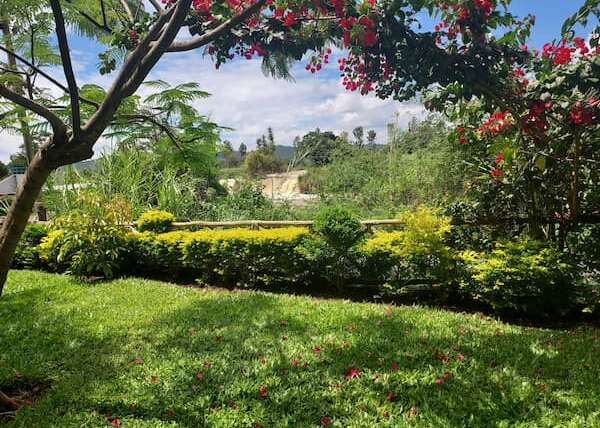The Jumba La Mtwana entrance fee gives visitors entry to a site of cultural, religious, and historical heritage. The Big House of the Slave (Jumba La Mtwana in Swahili), or Jumba Ruins, is a treasure in many senses. It sits on close to 12 acres of robust baobab forestland kissing the desolate and beautiful beachfront.
The deceptively quiet ruins, still standing in defiance of time and the elements, are the remnants of a small coastal Swahili port town. Folklore is passed down through generations, and archaeological research describes the town as a stopover for slave traders.
Unlike the previous human cargo, the Indian Ocean is still an active trade route for other wares.

RELATED:https://snippetsofnairobi.com/fort-jesus-museum-mombasa-entrance-fee/
The Wealth in Jumba La Mtwana Entrance Fee
The Jumba La Mtwana ruins were a source of international attention upon excavation of the site in 1972. Evidence from the artefacts found at the site and their associated activities showed that the town dates back to the 14th century. However, the inhabitants suddenly abandoned it in the 15th century.
Two speculations remain rife about the ruins. One is the choice of the site to build the mini port. The second is the cause of the sudden disappearance of its human inhabitants. Though most of the ancient port town has bowed to the ravages of time, the enduring Jumba La Mtwana history remains secured in the remnants of the famous Great Mosque, still overlooking the Ocean.
The baobab trees, with their weather and age-gnawed twisted arms, mark the site of an ancient kaya and are about 600 years old. Dried-out old wells of 40-metre depth, a possible guesthouse, cisterns, and fragments of dishes from the Orient shed more light on the lifestyle of the past civilization that inhabited the town then.
The haunting demeanour of Jumba La Mtwana comes full circle with a graveyard in this coastal town heralded by an eerie truth captured in an Arabic inscription; each soul shall taste death.
Under the writing is a tiny hole representing the gateway humans must pass through to the next world. Visitors can peer through the tiny hole to paradise and marvel at the other antique treasures of this gazetted cultural and archaeological national monument after committing to the Jumba La Mtwana entrance fee.
The fees help support the much-needed renovation work to preserve the ruins.
Jumba La Mtwana Entry Fee
Entry Fee
- Kshs 200 per person
Guided Tour Fee
- Negotiable
Jumba La Mtwana Opening Hours
Jumba La Mtwana opens Monday to Friday from 8.00 am to 6.00 pm.
Jumba La Mtwana Contacts
The contact is the Jumba ruins curator, Hashimi Hinzano reachable on phone number +254713942881 and email hashimihinzano@yahoo.com
Where is Jumba La Mtwana?
The Jumba La Mtwana locationisless than 20 km from Mombasa Island and a kilometre north of Mtwapa Creek.
It is in Kilifi at Malindi. It is hard to miss the site about 4 kilometres off Malindi Road.
READ ALSO:https://snippetsofnairobi.com/nguuni-nature-sanctuary-entry-fee/
Unique Activities at Jumba La Mtwana
Jumba La Mtwana quenches the curiosity of tourists, students, and researchers thirsty for an expedition into ancient maritime trade and civilizations along the Indian Coast.
Besides being a cultural and archaeological treasure, Jumba La Mtwana’s Great Mosque is a nesting site for the endangered Green turtles and Hawksbill, an attraction for tourists and nature conservers during the nesting season.
Students can study the effect of ocean currents and excavation by nesting wildlife in compromising the integrity of beachfront landforms and buildings such as the Great Mosque.
There is an arboretum, a picnic site, and access to a private beach. The curator also runs a small museum showcasing aspects of the alluring Swahili culture. In addition, he gives guided tours on the site for a stipend added to the Jumba La Mtwana entrance fee price.
Conclusion
The Jumba La Mtwana entrance fee gives tourists and students a glimpse at the Swahili culture of centuries buried in time.
Through the funds, the management can explore ways of renovating the Jumba Ruins to preserve them and the biodiversity built around them for the coming generations, possibly more centuries into the future.


